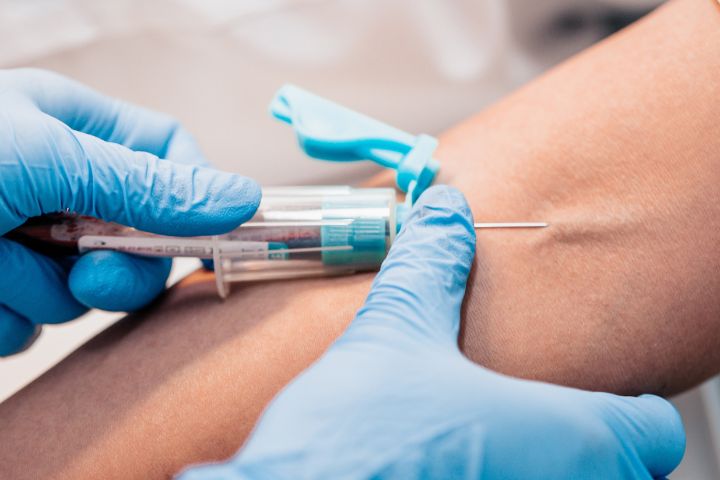5 Easy Facts About Northeast Medical Institute - New Haven Campus Phlebotomy Course & Cna Class Explained
5 Easy Facts About Northeast Medical Institute - New Haven Campus Phlebotomy Course & Cna Class Explained
Blog Article
The Ultimate Guide To Northeast Medical Institute - New Haven Campus Phlebotomy Course & Cna Class
Table of ContentsWhat Does Northeast Medical Institute - New Haven Campus Phlebotomy Course & Cna Class Do?Fascination About Northeast Medical Institute - New Haven Campus Phlebotomy Course & Cna ClassExcitement About Northeast Medical Institute - New Haven Campus Phlebotomy Course & Cna ClassThe Greatest Guide To Northeast Medical Institute - New Haven Campus Phlebotomy Course & Cna ClassOur Northeast Medical Institute - New Haven Campus Phlebotomy Course & Cna Class StatementsAll About Northeast Medical Institute - New Haven Campus Phlebotomy Course & Cna Class
The use of such tools ought to be accompanied by various other infection avoidance and control practices, and training in their use.For settings with reduced sources, cost is a motoring variable in procurement of safety-engineered tools - CNA Courses. Where safety-engineered tools are not offered, experienced use a needle and syringe serves. Accidental direct exposure and details info concerning an occurrence must be videotaped in a register. Support solutions ought to be advertised for those that undertake unintentional direct exposure.
Among the vital markers of high quality of care in phlebotomy is the involvement and teamwork of the individual; this is equally useful to both the health and wellness employee and the client. Clear details either composed or verbal should be readily available to each person that undertakes phlebotomy. Annex F provides example message for describing the blood-sampling treatment to a client. In the blood-sampling area for an outpatient department or center, provide a comfortable reclining couch with an arm remainder.
More About Northeast Medical Institute - New Haven Campus Phlebotomy Course & Cna Class
Make certain that the signs for blood tasting are plainly defined, either in a composed protocol or in recorded instructions (e.g. in a research laboratory kind). Collect all the tools needed for the procedure and area it within risk-free and simple reach on a tray or trolley, ensuring that all the things are clearly visible.
Present yourself to the client, and ask the individual to mention their full name. Inspect that the research laboratory type matches the patient's identification (i.e. match the client's information with the research laboratory type, to make sure exact recognition).
Make the client comfortable in a supine position (if possible). Location a clean paper or towel under the patient's arm. Talk about the examination to be carried out (see Annex F) and acquire verbal permission. The individual has a right to decline an examination at any kind of time prior to the blood tasting, so it is necessary to ensure that the patient has actually recognized the treatment.
5 Simple Techniques For Northeast Medical Institute - New Haven Campus Phlebotomy Course & Cna Class
Expand the client's arm and inspect the antecubital fossa or forearm. Find a vein of a great dimension that is visible, straight and clear. The representation in Area 2.3, shows typical settings of the vessels, however several variations are possible. The average cubital blood vessel exists between muscles and is generally the most simple to penetrate.
DO NOT insert the needle where capillaries are drawing away, because this enhances the chance of a haematoma. The capillary must be visible without applying the tourniquet. Situating the capillary will certainly aid in identifying the appropriate size of needle. Apply the tourniquet regarding 45 finger widths over the venepuncture site and re-examine the capillary.
Specimens from central lines carry a danger of contamination or wrong research laboratory examination results. It is appropriate, yet not ideal, to draw blood specimens when first introducing an in-dwelling venous tool, prior to attaching the cannula to the intravenous liquids.
Northeast Medical Institute - New Haven Campus Phlebotomy Course & Cna Class for Dummies
Enable the area to completely dry. Failure to permit enough call time enhances the threat of contamination. DO NOT touch the cleansed website; particularly, DO NOT put a finger over the vein to guide the Source shaft of the subjected needle. It the website is touched, repeat the disinfection. Perform venepuncture as complies with.
Ask the person to form a clenched fist so the veins are extra popular. Get in the vein quickly at a 30 degree angle or much less, and remain to introduce the needle along the capillary at the most convenient angle of entry - PCT Classes. Once enough blood has actually been accumulated, release the tourniquet BEFORE withdrawing the needle
The 8-Minute Rule for Northeast Medical Institute - New Haven Campus Phlebotomy Course & Cna Class
Take out the needle gently and apply mild pressure to the site with a tidy gauze or dry cotton-wool ball. Ask the client to hold the gauze or cotton woollen in location, with the arm extended and raised. Ask the person NOT to flex the arm, since doing so creates a haematoma.

Not known Details About Northeast Medical Institute - New Haven Campus Phlebotomy Course & Cna Class
Do not push the syringe bettor due to the fact that added stress raises the threat of haemolysis. Where feasible, maintain the tubes in a rack and relocate the rack towards you. Inject downwards right into the ideal coloured stopper. DO NOT remove the stopper due to the fact that it will certainly launch the vacuum. If the example tube does not have a rubber stopper, infuse very slowly into the tube as lessening the stress and rate utilized to move the sampling decreases the risk of haemolysis.

Report this page